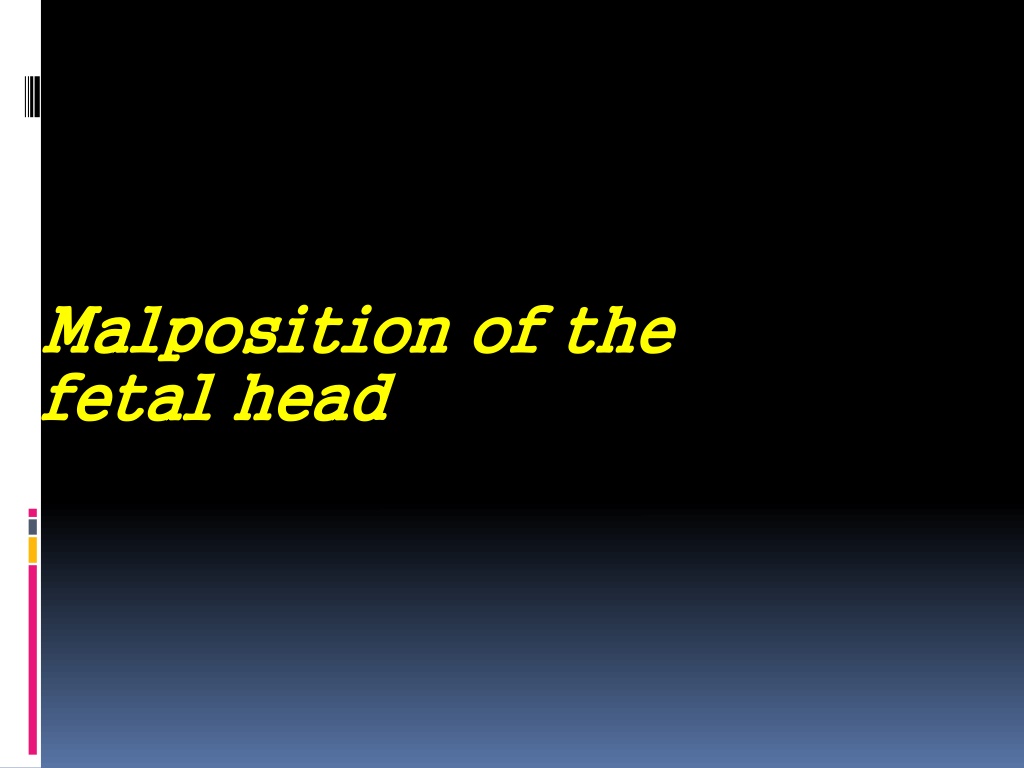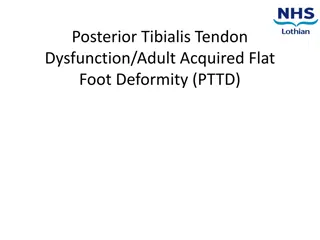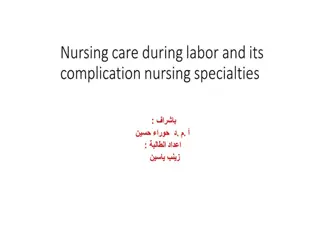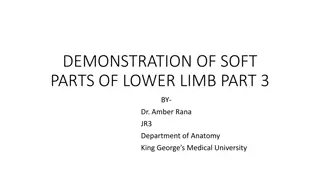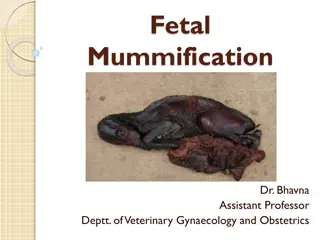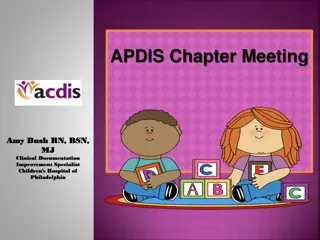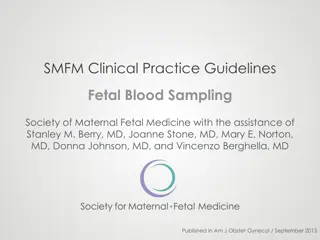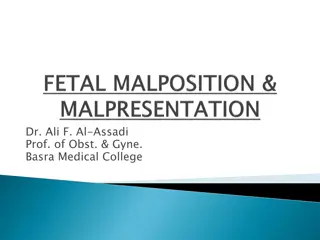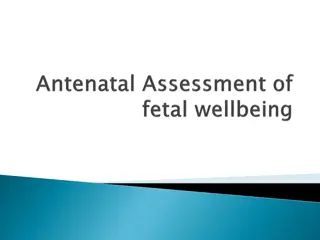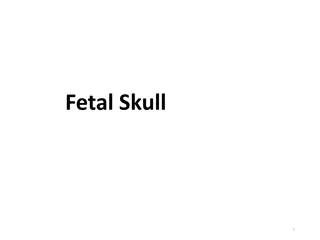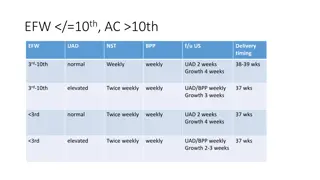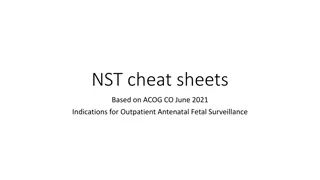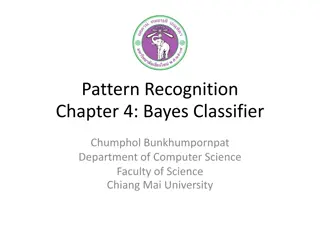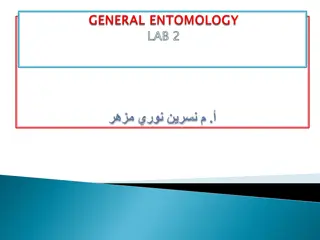Understanding Occipito-Posterior Position of the Fetal Head
Occipito-posterior position of the fetal head occurs when the head is in one of the oblique diameters with the occiput directed posteriorly. It can be categorized into Right Occipito-Posterior Position (ROP) and Left Occipito-Posterior Position (LOP), affecting 13% of vertex presentations. Causes include factors like pendulous abdomen, pelvic brim shape, sacrum flexibility, and placental location. Diagnosis involves abdominal examination and sonography can aid in identification, especially in obese women. It can lead to challenges in labor, highlighting the importance of early detection and management strategies.
Download Presentation

Please find below an Image/Link to download the presentation.
The content on the website is provided AS IS for your information and personal use only. It may not be sold, licensed, or shared on other websites without obtaining consent from the author. Download presentation by click this link. If you encounter any issues during the download, it is possible that the publisher has removed the file from their server.
E N D
Presentation Transcript
Malposition of the Malposition of the fetal head fetal head
occipito-posterior position of the fetal head : mean the head inters the pelvis in one of the oblique diameters and the occiput is directed posteriorly.
There are two positions: Right occipito-posterior position ROP (the occiput directed to the right sacro-iliac joint. The ROP is more common
Or left occipito-posterior position LOP( the occiput directed to the left sacro-iliac joint). Image result for occiput posterior
occur in 13% of vertex presentations. The presenting part is the vertex and the denominator is the occiput.
causes: 1.pendulous abdomen. 2.anthropoid pelvic brim: this favors direct O.P. or direct O.A. 3.anderiod pelvis. 4. a flat sacrum with a poorly flexed head leads to further deflexion and O.P. 5. the placenta on the anterior uterine wall. 6.idiopathic.
Diagnosis of O.P: During pregnancy: It can be a cause of non engagement of the fetal head before the onset of labour( in primigravida) . Abdominal examination 1.There is flattening of the lower abdomen. 2.The limbs are easily felt anteriorly. 3.Difficulty in defining the back which felt far in the flank. 4.Difficulty to hear the fetal heart sound which is heard in one of the flanks.
Sonography Can aid fetal position identification,especially in obese women or in women with rigid abdominal wall
Vaginal examination: Early in labour: Early rupture of membranes is common. High presenting part. Established labour The position can be determined from the direction of the anterior fontanelle, which can be easily felt behind the pubis
The degree of flexion of the head can be determined from the fontanelles also. 1.If only the anterior fontanelle can be felt the head is poorly flexed. 2.If both the anterior and posterior fontanelles can be felt the head is less poorly flexed. 3.If only the posterior fontanelle felt the head is well flexed. A well flexed head is more likely to rotate anteriorly.
Mechanism of labour: The mechanism of labour depends on whether the head is well flexed or incompletely flexed . 1.The well flexed head: If the head is well flexed, The occiput will be at lower level than the sinciput It will hit the pelvic floor first. undergoing long anterior rotation through three-eighths of a circle to lie behind the symphysis pubis. The occiput has thus rotated through the angle of 135 degree to bring the occiput to the symphysis pubis. The mechanism is thereafter the same for O.A. .
Mechanism of labor for right occiput posterior position, anterior rotation.
2.When the head is incompletely flexed: If the head is incompletely flexed the occipito- frontal diameter which measure 11.5 cm has to pass through the pelvis instead of the sub- occipito-bregmatic diameter which measure 9.5 cm. It is this that explain why some cases of occipito-posterior position has difficult and prolonged labour.
With incomplete flexion the sinciput will meet the pelvic floor first and rotate anteriorly to lie behind the symphysis While the occiput rotate backward by one-eighth of the circle to lie in the hallow of the sacrum. This is known as SHORT ROTATION (45 degree) and gives the persistent O.P or direct O.P position. The head may now be born with the face towards the posterior surface of the symphysis pubis (face to pubis).
The root of the nose is pressed against the bone. The vertex is born by flexion and followed by the occiput. Then the head extends, so the face and chin emerging from under the pubic arch. The vulval orifice is stretched by the occipito-frontal instead of the sub-occipito- frontal diameter with a difference in size of 1.5 cm. and a severe perineal tears may result.
3.Deep transverse arrest: In some cases the head becomes arrested with it s long axis in the transverse diameter of the pelvis. The degree of extension being such, that neither the occiput nor the forehead is sufficiently in advance to influence rotation. This is called deep transverse arrest of the head. It result from either: Incomplete forward rotation of occipito-posterior position. The majority are the result of failure of the head which inter the pelvis in occipito-transverse position to rotate anteriorly.
The course of labour in occipito- posterior position: Prolongation of the 1st and 2nd stage of labour are common. Ineffective uterine contraction is common because the poorly flexed head fails to press down upon the cervix. In 70% of cases there will be spontaneous rotation of the occiput to the anterior position. In about 10% there the occiput undergoes short back ward rotation and delivered in direct occipito-posterior position (face-to-pubes). In the remainder assisted rotation will be required.
Management of the first stage of labour: The 1st stage is managed as in a normal case. Nothing can be done to correct the Malposition or to influence the rotation of the head at this stage. A partogram is done to monitor the : 1.Uterine contraction (frequency, duration and strength ). 2.Fetal heart. 3.Dilatation of the cervix. If progressive cervical dilatation does not occur augmentation with an oxytocin drip may be tried. If still no progress obtained in a few hours caesarian section (C/S) is performed. Also if there is fetal distress C/S is done..
Management of the 2nd stage of labour: 1.In most cases (70% ) provided that the uterine contractions are strong and the woman is able to make good expulsive efforts the occiput rotates forward and normal delivery takes place. 2.In other cases (10% ) the baby may be delivered face-to-pubes with out difficulty but there is a great risk of a perineal tear. large episiotomy may be required. 3.In about 20% of cases there is failure of the presenting part to rotate and descend deep transverse arrest
Retention of urine is common in such labours and catheterization may be required. The mother may feel an urge to bear down before the second stage is reached, probably due to pressure on the sacrum and rectum. Premature expulsive efforts can delay progress by causing oedema of the cervix. an epidural is again helpful in this situation
Deep transverse arrest: Means arrest of labour when the fetal head has descended to the level of the ischial spines and the sagittal suture lies in the transverse diameter of the pelvis. The occiput lies on one side of the pelvis and the sinciput on the other side and the head is badly flexed. It is only diagnosed during the 2nd stage of labour. If the head is firmly fixed in the transverse position obstructed labour will occur.
Management:The first step in assisting delivery is rotation of the fetal head This can be performed by: 1.Manual rotation 2. forceps delivery.Kjelland s forceps. These two procedures needs an experts to perform them other wise it may result in excessive fetal and maternal morbidity and complications. 3.Vacuum extractor.
When the head is arrested in the transverse position the safest way to deliver the fetus is by performing C/S.
